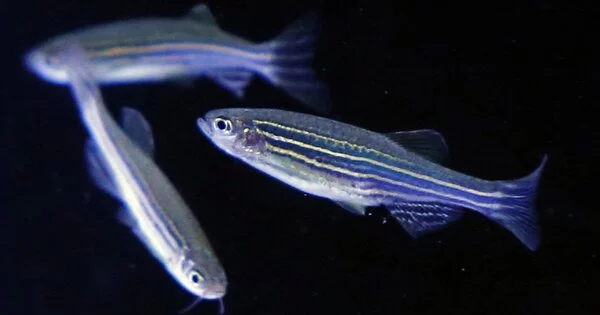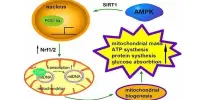Zebrafish, also known as Danio rerio, have been used as a model organisms in biological research for several decades due to their genetic and physiological similarities to humans and other vertebrates. In recent years, zebrafish have become increasingly popular as a tool for studying human diseases and the genetic basis of behavior, including domestication.
Queen Mary University of London researchers have demonstrated that zebrafish can provide genetic baz1b clues to the evolution of social behaviors in humans and domesticated species. The study, which was published in iScience, looked at genetically modified zebrafish that did not produce baz1b protein. The findings suggest that the gene is not only at the root of physical and behavioral changes in fish and other domesticated species, but also of human social relationships.
Domesticated species, such as dogs and cats, differ genetically from wild-type counterparts, including variation in the baz1b gene. These genetic changes are associated with physical and behavioral characteristics such as smaller facial features such as skulls and teeth, as well as being more sociopositive, less aggressive, and fearful.
However, studies have also suggested that modern humans domesticated themselves after they split from their extinct relatives, Neanderthals, and Denisovans. In doing so, we experienced similar physical and behavioral changes. Those changes have all been linked to the fact that domesticated animals have fewer of a certain type of stem cell, called neural crest stem cells.
Our findings support the existing hypothesis that the behavioral and morphological changes associated with domestication in both animals and humans can be attributed to the underdevelopment of neural crest stem cells.
Jose Vicente Torres Perez
Domestication is the process by which wild animals are selectively bred over generations to become more amenable to human control and use. The genes that drive domestication have long been the subject of scientific curiosity, and zebrafish testing is one of the many approaches used to identify these genes. By comparing the genomes of domesticated and wild zebrafish, researchers can identify differences in gene expression and regulation that may be responsible for the changes in behavior and physiology that have been observed in domesticated animals.
The research led by the Queen Mary team builds on this by studying the impact of removing baz1b gene function, and the impact of doing so on neural crest development and social behavior.
The mutant zebrafish studied were found to be more socially prone than their functional baz1b counterparts. They demonstrated an increased proclivity to interact with members of the same species, though the differences between the two types of zebrafish were no longer discernible after three weeks.
In addition to being more sociable, the mutant zebrafish displayed distinct facial changes later in life. Changes in eye length and width, a protruding forehead, and a shorter snout were among them. This was accompanied by a reduction in anxiety-related behaviors.

The researchers examined the zebrafish’s response to a brief flash of light, specifically, the distance traveled over a five-minute period following the flash, as well as their response to an acoustic startle and their response when exposed to a new environment, to determine this. In every case, the mutant zebrafish recovered faster after a change in condition, indicating less fear-related reactivity.
The mutant zebrafish also had mild neural crest underdevelopment during larval stages. The study discovered that the baz1b gene in zebrafish influences both morphological and behavioral characteristics associated with the domestication syndrome in other species.
“Since the process of self-domestication, which allowed modern humans to form larger social groups, among other characteristics, is similar to the process of domestication in other “domesticated” species, our research has the potential to help us unravel the biological roots governing these behaviors,” said Jose Vicente Torres Perez, co-author from Queen Mary University of London and the University of Valencia. Our findings support the existing hypothesis that the behavioral and morphological changes associated with domestication in both animals and humans can be attributed to the underdevelopment of neural crest stem cells.”
Professor Caroline Brennan, lead author and Queen Mary University of London Professor of Molecular Genetics, added: “This study provides an intriguing look at the origins of how we interact with others. While extrapolating zebrafish findings to other vertebrates may be difficult, comparative studies like these provide insight into the evolution of human cognition.”
Because approximately 80% of genes associated with human diseases have a corresponding orthologue (a gene in a different species that evolved from a common ancestor), zebrafish are an ideal model for studying the genetics and neuronal circuitry underlying behavior.
















